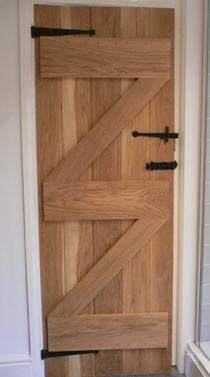Why is this door not recommended for internal use?
Discussion
Bill said:
Why is this door not recommended for internal use?
Often it is because of the moisture content of the wood. The recommended moisture content for Internal doors is 10% (+/- 2%) and for external doors it is 16% (+/- 3%). They don't recommend using an external door internaly because it might warp as it dries out. cold thursday said:
Bill said:
Why is this door not recommended for internal use?
Often it is because of the moisture content of the wood. The recommended moisture content for Internal doors is 10% (+/- 2%) and for external doors it is 16% (+/- 3%). They don't recommend using an external door internaly because it might warp as it dries out. The joiner mate who replaced them for me said they were external doors and had probably been stored outside for quite some time before being fitted indoors
I ended up replacing them all with engineered oak internal doors.....
bogie said:
cold thursday said:
Bill said:
Why is this door not recommended for internal use?
Often it is because of the moisture content of the wood. The recommended moisture content for Internal doors is 10% (+/- 2%) and for external doors it is 16% (+/- 3%). They don't recommend using an external door internaly because it might warp as it dries out. The joiner mate who replaced them for me said they were external doors and had probably been stored outside for quite some time before being fitted indoors
I ended up replacing them all with engineered oak internal doors.....
I would not use modern grown redwood for an external door personally, and I'd assume to use inside within a centrally heated home would also be a disaster, because it would shrink so badly.
Its a lot to do with how quickly it grows and how old the timber is before felling these days that dictates their use.
To the OP, I'd assume its because the door is 44MM thick and most internal doors and their linings are built for 35MM ones, nothing else
Edited by Wozy68 on Friday 8th May 21:44
m4ckg said:
Was it a 3 storey? They were probably for doors
Nope, 2 story 1980s house semi. Brick outer wall, timber inner wall & throughout interior. With a glass panel above with an inch gap at the top for air circulation. Doors were cheap horrible brown hollow thin board types (beet way to describe them). Gassing Station | Homes, Gardens and DIY | Top of Page | What's New | My Stuff






